Posted by Marc Williams
Plants and Healers International Executive Director
i was blessed recently to spend some good time with naturalist and author Roger Hammer both at his home in Homestead, Florida and inside Everglades National Park.
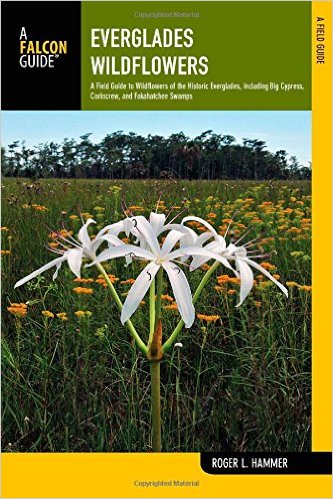
Roger has written numerous field guides including one on Everglades wildflowers (2015b) and the Florida Keys wildflowers (2004). He has an upcoming book about the wildflowers of central Florida (2016) and he has written a book on attracting hummingbirds and butterflies as well (2015a). Roger worked at Castellow Hammock Nature Center for over 30 years. He also was awarded with an honorary Ph.D from Florida International University in 2012.
Roger took me on a tour of his yard where he has lots of interesting plants such as Pond-Apple (Annona glabra), Moujean Tea (Nashia inaguensis), Arborescent Dutchman’s Pipe (Aristolochia arborea) and many others. He has a number of fruit trees as well. For his Mango he chose the “Manilito” variety. He also has a hybrid of the Sea Grape (Coccoloba uvifera) and Pigeon Plum (Coccoloba diversifolia). Some other choice fruits include Caimito (Chrysophyllum cainito), Black Mulberry (Morus nigra), Avocado (Persea americana) and a J-31 cultivar of Jackfruit (Artocarpus heterophyllus). The latter is more columnar and compact in form, suitable as a dooryard tree, but was still loaded with fruit as seen below.
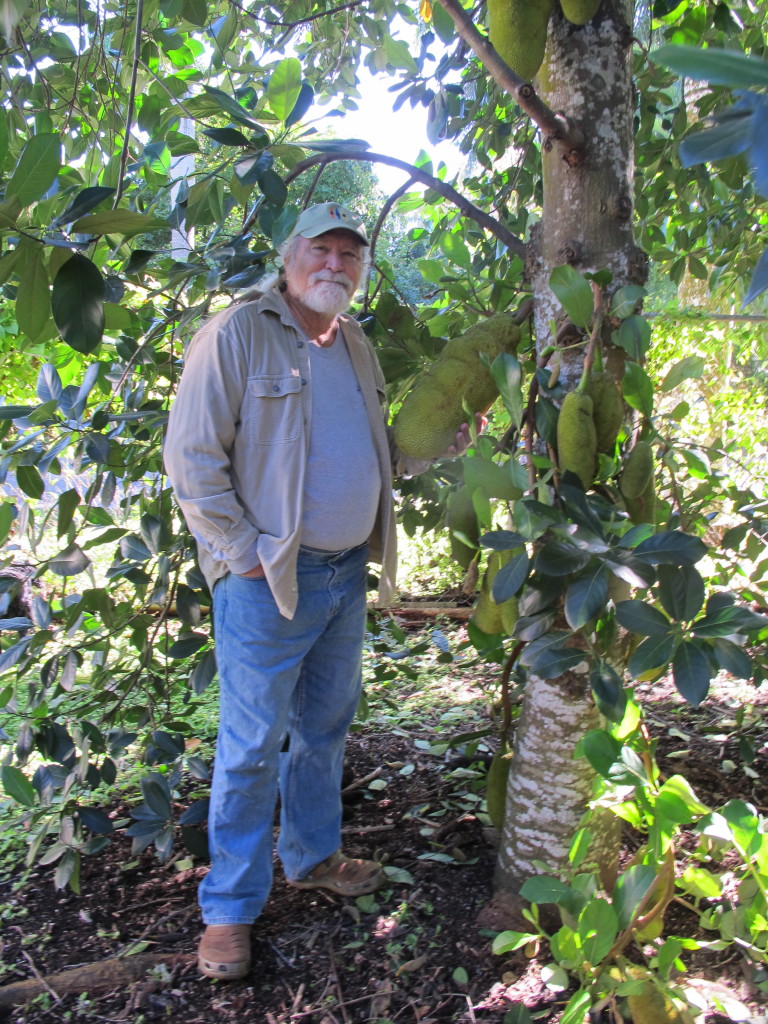
Roger’s knowledge of various kingdoms of life forms is astonishing. In addition to introducing me to many new plants he also shared their connections to birds, butterflies and other organisms. For instance the introduced White-winged Parakeet (Brotogeris versicolorus) loves to feast on the seeds of the Silk Floss Tree (Ceiba speciosa) and the hummingbirds will fight over visits to (Pavonia bahamensis). The latter is also visited by the Zebra Longwing (Heliconias charitonia) which is the state butterfly of Florida. Two-flowered Passionfruit (Passiflora biflora) is a weedy thing in his yard but also supplies larval food for Zebra Longwings, Julia Heliconians (Dryas iulia), and Gulf Fritillaries (Agraulis vanillae), though the fruit is not much to speak of regarding human consumption. The Grackles and Blue Jays love the fruit of the Cherry-of-the-Rio Grande (Eugenia aggregata).
Some other uncommon tropical plants were on display such as the lemon-scented Bay Rum (Pimenta racemosa), Rough Strongbark/back (Bourerria radula), Smooth Strongbark/back (B. cassinifolia) and Euphorbia punicea from Jamaica that is a nectar source for the Zebra butterfly. It was exciting to also see Parrotweed (Bocconia frutescens) that Roger referenced as from the Bahamas whereas the first time i saw this species was way up high in the Talamanca mountains of Costa Rica.
As amazing as the tour of Roger’s yard was i was also excited to go to the local wild environs where he has spent nearly 40 years studying the various life forms, first as an employee of the Miami-Dade Parks Department and now independently. Roger told me how on one occasion he was picked to be a guide for biologists from various disciplines from around the world who came for a conference at Fairchild Tropical Botanic Garden. What an honor and joy to accompany he and his wife Michelle for some small group time on the trails around Long Pine Key in Everglades National Park. Poisonwood (Metopium toxiferum)
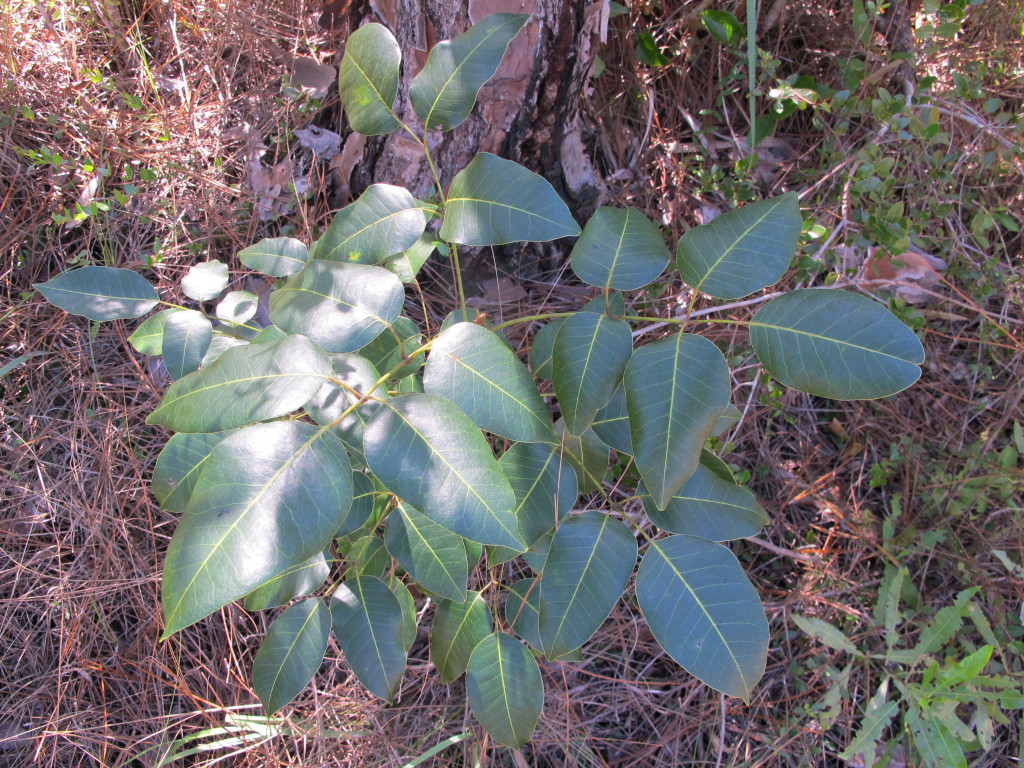
was a very common understory plant as was its family member Winged Sumac (Rhus copallinum). Endemics such as Spermacoce terminalis and Pineland Clustervine (Jaquemontia curtisii) were present as well. Roger shared a story about an author working on the Asteraceae of North America who was going to travel a long distance just to catch site of the unassuming Sachsia polycephala syn S. bahamensis known mostly from the Caribbean.
Regarding other life forms we caught site of the Atala (Eumaeus atala) whose caterpillars feed on small Coontie (Zamia pumila)
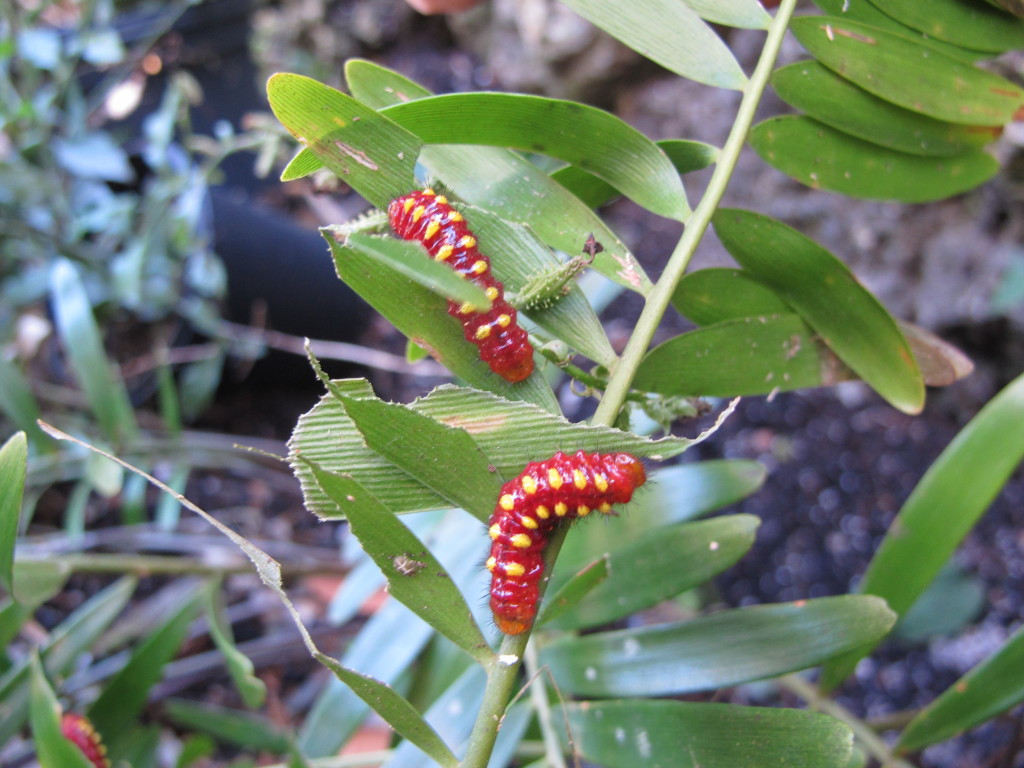
and was thought extinct in Florida until Roger found it at Virginia Key at Key Biscayne in 1979 (Eliot, 1996). White Indigoberry (Randia aculeata) is a good nectar source for Atalas.
We also saw tuberous Passionflower vine (Passiflora tuberosa) that supports the typical Gulf Fritillaries and others. It has very heterophyllous leaves. Pineland Croton (Croton linearis) was one plant present which supports two rare native butterflies including the Bartram’s Scrub-Hairstreak (Strymon acis) and the Florida Leafwing (Anaea troglodyta floridalis). As an aside the USDA still has it listed as (Croton michauxii var. michauxii). Even though i like the former name which is descriptive of an actual characteristic of the plant and accepted by the foremost authority on such matters The Plant List. The namesake Michauxs from France are some of my favorite botanists ever, along with the Bartrams their American counterparts, for the incredible amounts of studies they conducted in the southeast in late 1700s and early 1800s (Anderson, 1990; J. Bartram, 1942; W. Bartram & Harper, 1998; Coker, 1911; Cothran J. R, 2004; Deleuze, Michaux, Williams, & Sims, 2011; Earnest, 1940; Fishman G, 2004; Gummere, 1955; Hallock, 2001; Harper, 1953; Lackey C. E, 2004; McClellan III J. E, 2004; Merritt III, 1978; A. Michaux, 1974; F. A. Michaux, 1805; Pluchet R, 2004; Plummer, 1977; Rembert, 1979; Rembert Jr. D. H, 2004, n.d.; Reveal J. L, 2004; Rogers G. A. Rogers-Price V. Hagan D.V, 2004; Savage, 1986; Silver, 1978; Sorrie B. A, 2004; Stephens, 1967; Walter Kingsley Taylor & Norman, 2002; W. K. Taylor & Norman, 2004; Thwaites, Michaux, Michaux, & Harris, 1904; Walters, 1989; Williams, 2004; Williams C, 2004).
It was nice to see a thriving Red Bay (Persea borbonia) as this genus, which includes Avocados (Persea americana), is currently under attack from the Laurel Wilt disease spread by the introduced Red Bay Ambrosia beetle (Xyleborus glabratus) which intentionally inoculates plants with the fungus (Raffaelea lauricola) as a way of cultivating a food source. The beetles are thought to have been introduced in Georgia around 2002 and since then have steadily marched south affecting many members of the Lauraceae family on their way. Some varieties in particular of the Avocado seem to be resistant as can be seen in the link about the disease above.
We also saw a station for an annual competition hunt of the introduced and invasive Burmese Python (Python bivittatus). 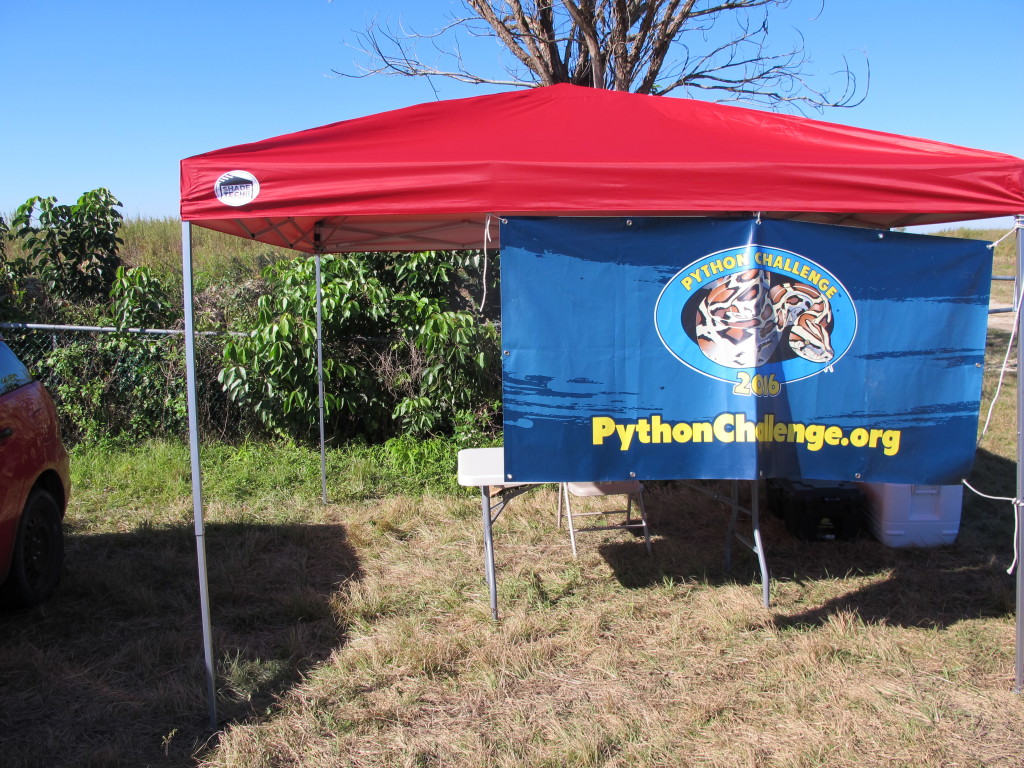 According to the attendant they had already caught 42 individuals up to 16 feet long in eight days! One other invasive we took note of was an orchid of all things (Eulophia graminea) which was relatively recently introduced but is now running rampant across the south of the state.
According to the attendant they had already caught 42 individuals up to 16 feet long in eight days! One other invasive we took note of was an orchid of all things (Eulophia graminea) which was relatively recently introduced but is now running rampant across the south of the state.
Other interesting woody plants abounded. Two versions Bullys, one with thorns, Florida Bully (Sideroxylon reclinatum) and one without, White Bully (S. salicifolium) as well as Pigeon Plum (Coccoloba diversifolia).
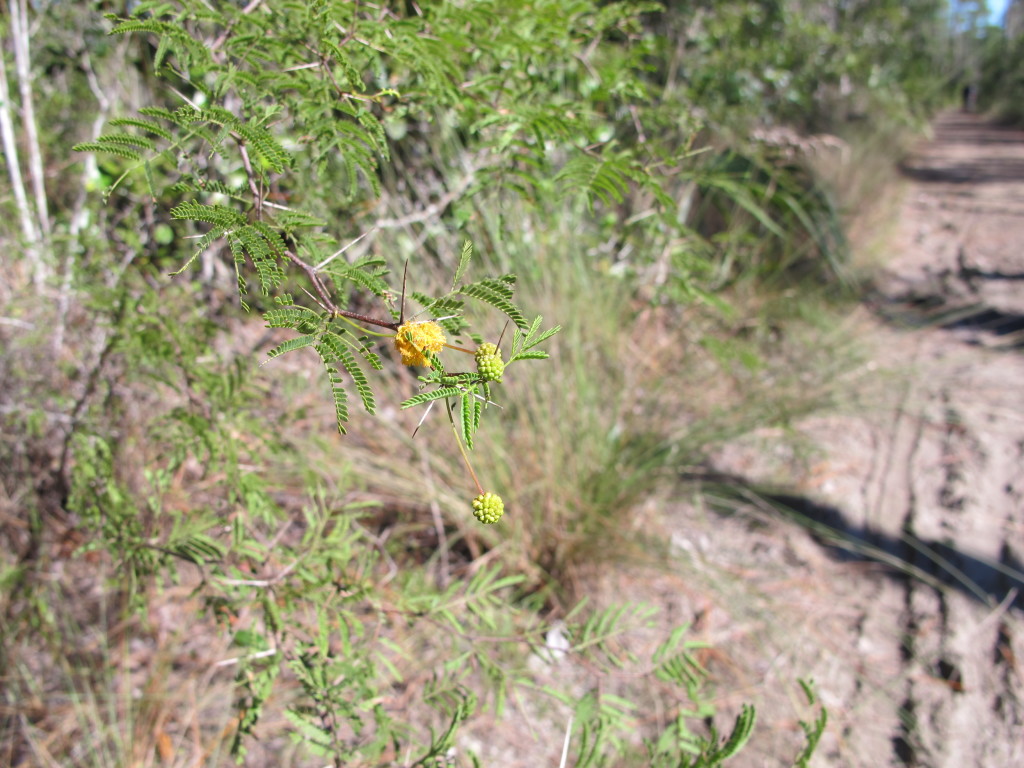
The native Pineland Acacia (Acacia pinetorum) which the USDA refers to with the outdated (Vachellia farnesiana var pinetorum) with pretty yellow/orange flowers was on display as was Tetrazigia bicolor amongst the few Melastomataceae members present in Florida natively. Back at the house i also took note of the native Button Sage (Lantana involucrata) which unlike other things called sage from the Lamiaceae and Asteraceae is a member of the Verbenaceae.
All in all the time with Roger was delightful and informative. i was glad to be able to purchase his books that i did not have already from him directly in one way of supporting a very good cause and get them autographed to boot. Here’s hoping for more good times botanizing down the line with this great naturalist and human being!
Literature Cited
Anderson, D. (1990). Bartram’s Travels and the Politics of Nature. Early American Literature, 25(1), 3. http://doi.org/Literary Criticism
Bartram, J. (1942). Diary of a Journey Through the Carolinas, Georgia, and Florida, 1765-66. Philadelphia: American Philosophical Society.
Bartram, W., & Harper, F. (1998). The Travels of William Bartram: Naturalist’s Edition. University of Georgia Press.
Coker, W. C. (1911). The Garden of Andre Michaux. Journal of the Elisha Mitchell Scientific Society, 27(2), 66–73.
Cothran J. R. (2004). Treasured Ornamentals of Southern Gardens – Michaux’s Lasting Legacy. Castanea, Supplement, 149–157.
Deleuze, J. P. F., Michaux, A., Williams, C., & Sims, J. (2011). The annotated memoirs of the life and botanical travels of André Michaux. Athens, GA: Fevertree Press.
Earnest, E. P. (1940). John and William Bartram, Botanists and Explorers, 1699-1777, 1739-1823. Philadelphia: University of Pennsylvania press.
Eliot, J., L. (1996, July). Butterfly Flutters Back. National Geographic, 190(1), 142.
Fishman G. (2004). André Michaux: Understanding the Person. Castanea, Supplement, 147–148.
Gummere, R. M. (1955). William Bartram, a Classical Scientist. The Classical Journal, 50(4), 167–170.
Hallock, T. (2001). “On the Borders of a New World”: Ecology, Frontier Plots, and Imperial Elegy in William Bartram’s “Travels.” South Atlantic Review, 66(4), 109–133.
Hammer, R. L. (2004). Florida Keys Wildflowers: A Field Guide to the Wildflowers, Trees, Shrubs and Woody Vines of the Florida Keys. Guilford, CT: Falcon Guides.
Hammer, R. L. (2015a). Attracting Hummingbirds and Butterflies in Tropical Florida: A Companion for Gardeners. Gainseville, FL: University Press of Florida.
Hammer, R. L. (2015b). Everglades Wildflowers: A Field Guide to Wildflowers of the Historic Everglades, including Big Cypress, Corkscrew, and Fakahatchee Swamps (2nd Ed). Guilford, CT: Falcon Guides.
Hammer, R. L. (2016). Central Florida Wildflowers: A Field Guide to Wildflowers of the Lake Wales Ridge, Ocala National Forest, Disney Wilderness Preserve, and More. Guilford, CT: Falcon Guides.
Harper, F. (1953). William Bartram and the American Revolution. Proceedings of the American Philosophical Society, 97(5), 571–577.
Lackey C. E. (2004). The Fragmented Habitat of Michaux’s Beautiful Discovery: Shortia Galacifolia T.&G. (Diapensiaceae). Castanea, Supplement, 174–177.
McClellan III J. E. (2004). André Michaux and French Botanical Networks at the End of the Old Regime. Castanea, Supplement, 69–97.
Merritt III, J. I. (1978). William Bartram in America’s Eden. History Today, 28(11), 712. http://doi.org/Article
Michaux, A. (1974). Flora Boreali-Americana. New York: Hafner Press.
Michaux, F. A. (1805). Travels to the West of the Alleghany Mountains in the States of Ohio, Kentucky,and Tennessea [sic], and Back to Charleston, by the Upper Carolines: Comprising the Most Interesting Details on Thepresent State of Agriculture, and the Natural Produce of Those Countries, Together with Particulars Relative to Thecommerce That Exists Between the Above-Mentioned States, and Those Situated East of the Mountains and Low Louisiana,undertaken in the Year 1802, Under Auspices of His Excellency M. Chaptal, Minister of the Interior (2nd ed). London: Printed by D.N. Shury for B. Crosby and Co. and J.F. Hughes.
Pluchet R. (2004). Michaux Mysteries Clarified. Castanea, Supplement, 228–232.
Plummer, G. L. (1977). “Franklinia Alatamaha” Bartram ex Marshall: The Lost “Gordonia” (Theaceae). Proceedings of the American Philosophical Society, 121(6), 475–482.
Rembert, D. H. (1979). The Carolina Plants of Andre Michaux.
Rembert Jr. D. H. (2004). André Michaux’s Travels and Plant Discoveries in the Carolinas. Castanea, Supplement, 107–118.
Rembert Jr. D. H. (n.d.). Botanical Explorations of William Bartram. Retrieved December 8, 2008, from http://www.bartramtrail.org/pages/explor.html
Reveal J. L. (2004). No Man Is an Island: The Life and Times of André Michaux. Castanea, Supplement, 22–68.
Rogers G. A. Rogers-Price V. Hagan D.V. (2004). André Michaux’s Influence on Stephen Elliott’s a Sketch of the Botany of South-Carolina and Georgia. Castanea, Supplement, 217–222.
Savage, H. (1986). André and François André Michaux. Charlottesville: University Press of Virginia.
Silver, B. (1978). William Bartram’s and Other Eighteenth-Century Accounts of Nature. Journal of the History of Ideas, 39(4), 597–614.
Sorrie B. A. (2004). The Status of Rare Vascular Plants That Bear Michaux’s Name. Castanea, Supplement, 158–168.
Stephens, G. M. (1967). William Bartram’s Venture into the Cherokee Country, 1775. Asheville: Stephens Press.
Taylor, W. K., & Norman, E. . (2004). André Michaux Visits Spanish East Florida, Spring 1788. Castanea, Supplement, 119–129.
Taylor, W. K., & Norman, E. M. (2002). Andre Michaux in Florida: An Eighteenth Century Botanical Journey (1st edition). Gainesville, FL: University Press of Florida.
Thwaites, R. G., Michaux, A., Michaux, F. A., & Harris, T. M. (1904). Travels West of the Alleghanies.
Walters, K. S. (1989). The Creator’s Boundless Palace: William Bartram’s Philosophy of Nature. Transactions of the Charles S. Peirce Society, 25(3), 309. http://doi.org/Article
Williams, C. (2004). Andre Michaux, a Biographical Sketch. Castanea, Supplement, 16–21.
Williams C. (2004). Explorer, Botanist, Courier, or Spy? André Michaux and the Genet Affair of 1793. Castanea, Supplement, 98–106.